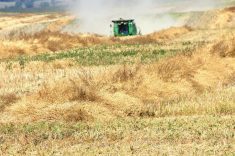Amendments to a controversial land bill are to be tabled in the Alberta legislature this week.
In a news conference Nov. 18, Alberta infrastructure minister Jeff Johnson said he planned to present amendments to the Land Assembly Project Area Act (LAPA), formerly known as Bill 19, to address landowners’ concerns.
The act outlines the process through which the province acquires private land for major projects such dams, reservoirs and ring roads around major cities.
“Our goal is to address the concerns that have come up with respect to landowner rights and to make sure that landowners are respected when the government needs to acquire land for public projects,” said Johnson.
Read Also

Alberta researcher helps unlock the economics of farming
Lethbridge Polytechnic researcher helping agriculture producers with decision-making tools in economic feasibility
Complaints about the act fell into four categories:
• confusion over the exact definition of a LAPA project
• whether landowners could get fair and proper compensation for expropriated land
• whether landowners had proper access to the courts in the event of disagreement
• penalties were seen as too heavy handed
“We are going to address every one of those four areas in the amendment that comes forward on Monday (Nov. 21),” he said. “Property owners deserve nothing less and they expect nothing less from their government and ultimately this is about giving more power to those landowners, which is the right thing to do.”
Johnson said details on the amendments would be available this week after presentation in the legislature.















